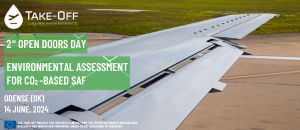Norland Int’l. Inc. introduces the first small-bottle blow molders capable of producing bottles for bottled water or other uses from corn-based plastics (PLA) for use by small to medium-sized bottling operations. The compostible bottles are produced by using preforms made of polylactide (PLA), a 100% corn-based plastic developed by NatureWorksLLC, a wholly-owned Cargill company, Minnetonka, Minnesota.
The bottles produced by Norland’s PLA blow molders are also used in dairy, fruit juices and other liquid food items, as well as for cosmetics and other products.
Norland’s Freedom™ Series of small-bottle blow molders for PLA-based bottles can produce up to 4500 bottles per hour, depending on bottle size and blow molder model used. Water bottling companies that produce their own bottles can save up to 25% to 50% of their cost of bottles, compared to buying pre-blown bottles. The NatureWorksPLA® preforms are manufactured at NatureWorks’ plant in Blair, Nebraska.
The Norland blow molders, designed originally for blowing PET (petroleum-based) plastics, have been specifically adapted to handle the PLA plastics. Preforms made of PET and PLA have different characteristics. For PET, preforms must be preheated to 100°C, while PLA preforms must be heated to just 75°C.
PLA bottles offer a significant advantage to producers of bottled water, juices, oils and other liquid products—they are environmentally friendly. While it is estimated that petroleum-based plastic products require thousands of years to decompose, PLA products are compostible within 45-90 days. This compost material can then be used to fertilize the next year’s crop of corn, completing the cycle of a totally renewable resource. PLA plastics contain no petroleum, and require 20-50% less fossil fuel to create than PET plastics.
The steps for making PLA (according to NatureWorks®) and PLA bottles include:
1. Harvested corn is broken down to isolate corn sugar (dextrose).
2. The dextrose is processed into lactic acid.
3. The lactic acid is then made into PLA pellets, which are used to make preforms for bottles, as well as other types of packaging containers.
4. PLA preforms enter Norland’s Freedom™ blow molder, heated to the optimum temperature, then stretched by air pressure into the desired shape and size.
5. The new bottles exit the blow molder, cooling as they go.
6. They are filled with water, fruit juice, or other liquid products, and sold to consumers
7. The used bottles can then be composted and used as fertilizer for growing more corn.
In addition to blow molders for manufacturing PLA and PET bottles, Norland Int’l. Inc. provides complete services to the bottled water industry, from consultation, plant design and layout, to its line of well-engineered and manufactured equipment for purifying, treating and bottling water.
For more information, contact Norland Int’l. Inc. by e-mail at bk@norlandintl.com, or by visiting www.norlandintl.com
(Cf. news of May 30, 2006.)
Source
PR Leap.com June 05, 2006.
Share
Renewable Carbon News – Daily Newsletter
Subscribe to our daily email newsletter – the world's leading newsletter on renewable materials and chemicals










